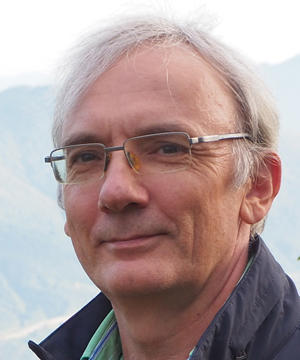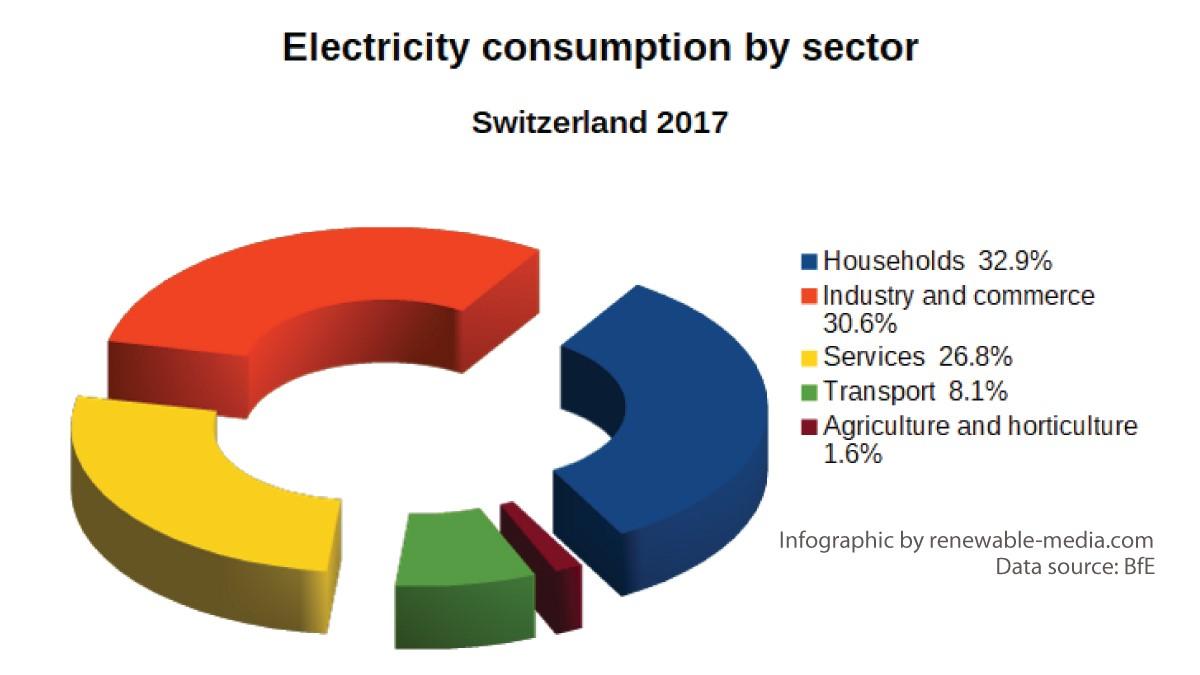
Renewables: Switzerland waiting for Godot
The Swiss approach to boosting renewable energy is far too slow, finds a specialist in environmental science and management.

As the EU moves forward into the new energy paradigm, and states all over the world are putting 100% renewable plans into action, reaping the economic benefits of new energy technologies, Switzerland is starting to look very last century. Like Vladimir and Estragon under their tree in Beckett’s play, Switzerland is waiting, but has forgotten what for.
In order to meet their obligations under the Paris Agreement for the reduction of greenhouse gas emissions, it is necessary for all 195 of the signatory countries to systematically reduce, and eventually eliminate, coal, oil and gas by 2050 in all energy sectors. Since any new or refurbished power station will likely still be operating mid-century, decarbonisation needs to be at the centre of all current and future decisions regarding power generation.
In Switzerland, Energy Strategy 2050External link is the roadmap to achieving this decarbonisation. It is a commitment made internationally and has been confirmed by popular vote. However, the latest federal laws and strategy proposals are surprisingly ambivalent regarding the most important elements of the strategy. The New Energy Act and recent Strategic Action Plan, while restating that renewables have a role to play, fail to make clear that fossil fuels are not an option for the gradual replacement of lost nuclear power.

The obvious way to reduce fossil fuel use is to electrify heating and transport, but other sectors, such as services, industry and agriculture, also have considerable potential to clean up their act. This will of course lead to a constant increase in the demand for electricity. Adding in the step-by-step loss of nuclear power (currently roughly a third of Swiss gross power generation) by the mid-2030s, this new demand can only partially be offset by greater efficiency in production, distribution and appliance design and use.
More electricity is needed, and although cross-border exchanges within a European-wide market provide advantages for everyone, it would be logically best that viable domestic energy sources be exploited where possible. This “domestic first” dictum would just as logically preclude becoming more and more dependent on more and more unreliable foreign supplies of gas and oil. But this logic has not been transcribed into the legal framework behind Energy Strategy 2050.
Hydropower was once effectively able to cover 100% of Swiss power needs, but has gradually slipped to the current 59.6%. There are plans to expand this resource where possible, but given the uncertainty in precipitation patterns and melting glaciers, maintaining, or at best increasing marginally, the current level of production will be as much as can be hoped for. Currently, hydroelectricity subsidies take up nearly half of the very modest cost-covering feed-in tariff (KET), the 2.3 c/kWh surcharge Swiss consumers see on their electricity bills.
Switzerland’s non-hydroelectric renewables generate five billion kWh of electricity, or 588 kWh per person, per year. The Swiss Energy Strategy target for 2030 is 11.4 TWh (11.4 billion kWh), or 1,340 kWh/person, a level that Europe has surpassed already.
Of the renewable options, biomass (wood, biogas and synthetic fuel) and waste incineration already contribute to heating, fuel and electricity generation, and can be used more. There is also wind and geothermal, which have seen practically no exploitation. But in terms of large-scale expansion of renewables, the best option lies in solar energy.
Some of the world’s top research into photovoltaics and other solar technologies is carried out in Swiss institutions, paid for by taxpayers. We invest heavily in the know-how which contributes to solar’s growing ability to out-compete conventional energy systems all over the world, but we do not benefit from it ourselves. And this is not because Switzerland is a dark and gloomy place, with no solar potential. The Paul Scherrer Institute estimates that the potential for rooftop solar PV could be as high as 19 billion kWh (TWh), or 30% of current electricity consumption. And that by some criteria is a conservative estimate. So why are the energy strategies so hopelessly understating the potential for renewables?
Circa one panel per person
Nineteen billion kWh is a significant number. That is about the amount of electricity generated last year by the five Swiss nuclear plants. And it is also the amount of electrical power consumed by Swiss households. On average, each household consumes 5,170 kWh of electricity for its lighting, appliances, and heating. Now here’s the interesting bit: photovoltaic panels under average Swiss conditions can generate a total of 1,200 kWh per square metre over a year. This means that on average, 4.3 m2, or 2.5 standard-sized photovoltaic panels – with a current market installation cost of CHF1,200 ($1,204) per household – are required to generate the amount of power the 2.3 people inside consume.
Naturally, the calculation is not that simple. Using the power from a rooftop directly in the home is best, but not always possible (who wants to wait for the sun to come out to turn their lights on?). Storing the power in batteries, whether for the homeowner’s evening use, or to charge up the new toy in the garage, entails 20% efficiency losses. A large-scale adoption of solar energy on residential, commercial and other rooftops therefore requires a whole system change, so that excess energy can be used in real time by whomever needs it, and smart grids can use this two-way power flow to stabilise the network and prevent curtailment – the dreaded wastage of unusable power.
Pitiful incentives
At least part of the reason for the slow uptake of renewables in Switzerland is government policy, which does not create a level playing field between conventional energy and the new technologies. Along with the low market value given to rooftop solar power when it is taken up by the grid, financial support and incentives are a pitiful fraction of other national programmes, and the long waiting list for project approval is famous around the world.
An important element of the energy transition will be the future internalisation of costs, which to date, fossil and nuclear power giants have been happy to ignore. Primary amongst these are carbon emissions, but there are also health and safety costs which are not respecting the “polluter pays” principle. This threat of internalisation of real costs dissuades investors in all major financial markets from risking carbon-dependent investment. Once considered marginal symbolic gestures of PR value only, green credentials in corporate planning are becoming determinants for business sustainability. And even in carbon-friendly USA, 100% renewable pledges are becoming reality in companies such as Apple, Microsoft and Google, and other sectors are following suit, as are individual cities and states.
With economies of scale, falling production costs, increasing efficiency in PV technology, smart grids and homes, rising demand for electrical power for heating and electric vehicles, the costs for solar energy can only continue to come down. At the same time, the costs for nuclear and fossil fuel generation can only continue to increase, with uncertainty inherent in fuel prices, the upcoming carbon tax, and the increasing price and curtailment of carbon emission certificates.
And, as if all that were not enough, renewable energies employ many more skilled people than conventional energies. So, as poor Vladimir and Estragon might ask, what exactly are we waiting for?
The views expressed in this article are solely those of the author, and do not necessarily reflect the views of swissinfo.ch.
swissinfo.ch publishes op-ed articles by contributors writing on a wide range of topics – Swiss issues or those that impact Switzerland. The selection of articles presents a diversity of opinions designed to enrich the debate on the issues discussed.

In compliance with the JTI standards
More: SWI swissinfo.ch certified by the Journalism Trust Initiative

















![The four-metre-long painting "Sonntag der Bergbauern" [Sunday of the Mountain Farmers, 1923-24/26] had to be removed by a crane from the German Chancellery in Berlin for the exhibition in Bern.](https://www.swissinfo.ch/content/wp-content/uploads/sites/13/2025/12/01_Pressebild_KirchnerxKirchner.jpg?ver=8f77363a)












You can find an overview of ongoing debates with our journalists here . Please join us!
If you want to start a conversation about a topic raised in this article or want to report factual errors, email us at english@swissinfo.ch.